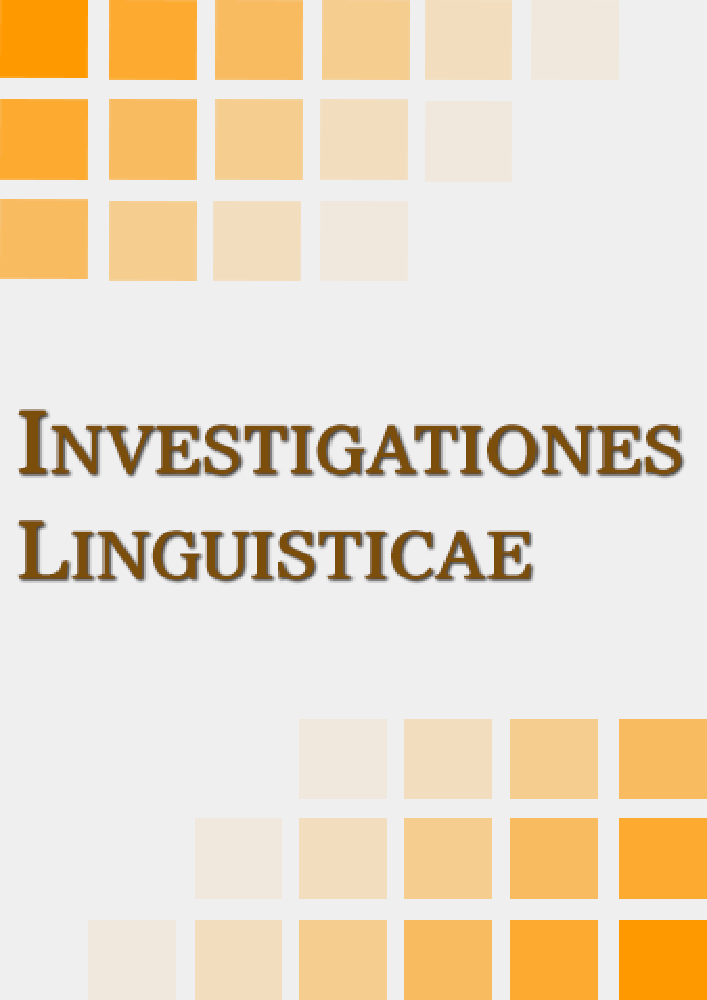Abstrakt
The paper is concerned with some syntactic consequences of Polish being a synthetic language with a rich system of case inflections and English lacking morphological case (or having a residual form of it). It will be argued that this typologically significant grammatical difference provides an essential premise in a unified explanation for the clustering of a number of syntactic differences between the two languages.
The argument is based on a set of functionally motivated constraints on grammatical representations. The constraints are proposed as a part of a theory of “syntactic diacrisis” and are claimed to result from a) the general nature of language as a semiotic system, and b) the specific properties of the human parsing mechanism.
The paper consists of three sections. The first contains a brief discussion of the role and place of functional explanations in syntax and introduces the concept of a “parser’s requirement on structure” (PROS).
The second section introduces and justifies some basic principles of “syntactic diacrisis”.
The third focuses on several syntactic differences between English and Polish and shows how they could all be explained by reference to the interplay of the functional (theory of diacrisis)and grammatical factors.
Bibliografia
Bever, T.G., and Langendoen (1971) A dynamic model of the evolution of language. Linguistic Inquiry : 433-461.
Bever,T,G.,McElree,B (1988) Empty categories access their antecedents during comprehension. Linguistic Inquiry. 19:35-43.
Berwick, R.C., and Weinberg, A. (1984) The grammatical basis of Linguistic Performance. MIT Press.
Biber,D.,Johansson,S.,Leech,G.,Conrad,S.,Finegan,E.(1999) Longman Grammar of Spoken and Written English. Longman.
Bolhuis, J.J., Tattersall, I., Chomsky, N., Berwick RC (2014) How Could Language Have Evolved ? PLoS Biol 12(8): e1001934. doi:10.1371/journal.pbio.1001934).
Chomsky, N. (1981) Lectures on Government and Binding. Foris.
Chomsky, N. (1991). Some notes on the economy of derivation and representation. In Robert Freidin, (ed.) Principles and Parameters in Comparative Grammar. MIT Press: 417-454.
Chomsky, N. (2005) Three factors in language design. Linguistic Inquiry, Vol. 36, No. 1: 1-22.
Chomsky,N. (2007)http://techtv.mit.edu/videos/16291-the-biology-of-the-language-faculty-its-perfection-past-and-future).
Chomsky, N., and Lasnik, H. (1971) Filters and control. Linguistic Inquiry 8: 425-504.
Croft, W. (1995) Autonomy and functionalist linguistics. Language 71: 490-532.
Dryer, M.S. 2013 Order of Subject, Object and Verb. In Dryer M.S., Matthew S. ,Haspelmath, M. (eds.) The World Atlas of Language Structures Online. Leipzig: Max Planck Institute for Evolutionary Anthropology. (Available online at http://wals.info, Accessed on 2016-o6-15.).
Emonds, J. (1976) A Transformational Approach to English Syntax. Academic Press.
Featherston,S. (2001) Empty categories in sentence processing. John Benjamins.
Fodor, J.D. (1978) Parsing strategies and constraints on transformations. Linguistic Inquiry 9: 427-473.
Fodor,J.D. (1983) Constraints on gaps: is the parser a significant influence? Linguistics 21: 9-34.
Fodor, J.D. (1984) Constraints on gaps: is the parser a significant influence. In Butterworth, B., Comrie, B. and Dahl, O. (eds.).Explanation for Language Universals, Mouton: 9-34.
Grice, P. (1975) Logic and conversation. In Cole, P., Morgan, J. Syntax and semantics. 3: Speech acts. Academic Press. pp. 41–58.
Grimshaw, J. (1991). Extended projection. Unpublished manuscript, Brandeis University,. (also appeared in J. Grimshaw (2005), Words and Structure, Stanford: CSLI).
Grucza, F. (1970) Sprachliche Diakrise im Bereich der Ausdrucksebenen des Deutschen. Beitrąge zur allgemeinen Sprachtheorie. Prace Komisji Językoznawczej PTPN, zeszyt 2, tom IV.
Grucza, F, (2010) Stratyfikacyjny model budowy i diakryzy języków ludzkich. Euro-edukacja Hawkins, J.A. (1983) Word Order Universals, Academic Press.
Hawkins, J.A. (1994) A performance Theory of Order and Constituency, Cambridge University Press.
Hawkins, J.A. (2004) Efficiency and Complexity in Grammars, Oxford University Press.
Kayne, R. S. (1994). The Antisymmetry of Syntax.. MIT Press.
Kayne, R. S. (2015) Antisymmetry and Morphology. Prefixes and Suffixes. https://wp.nyu.edu/roots4/wp-content/uploads/sites/1403/2015/07/kayne.pdf.
Koizumi, M. (1995) Phrase Structure in Minimalist Syntax. unpublished MIT PhD Thesis.
Kuno, S., Robinson, J. (1972) Multiple WH-Questions. Linguistic Inquiry 3: 463-487.
Larson, R. K. (1988). On the double object construction. Linguistic Inquiry 19 (3): 335-391. Lasnik, H. and M. Saito. 1984. On the nature of proper government. Linguistic Inquiry 15:235-289
Leech, G. (1983).Principles of Pragmatics. 9th edition. Longman.
Müller, G. (2000) , Free word order, morphological case, and sympathy theory. http://home.uni-leipzig.de/muellerg/mu1.pdf.
Newman, A.J., Supalla,T., Hauser,P., Newport,E.L. ,Bavelier,D. (2010) Dissociating neural subsystems for grammar by contrasting word order and inflection. Proceedings of the National Academy of Science.vol. 107 no. 16: 7539–7544.
Newmeyer, F.J. (1998) Language Form and Language Function, MIT Press.
Stowe,L. (1986) Parsing wh-constructions: Evidence for on-line gap location. Language and Cognitive Processes I: 227-245.
Zabrocki, L. (1962) Phon Phonem und distinctives Morphem, Biuletyn Fonograficzny. V,: 59-87.
